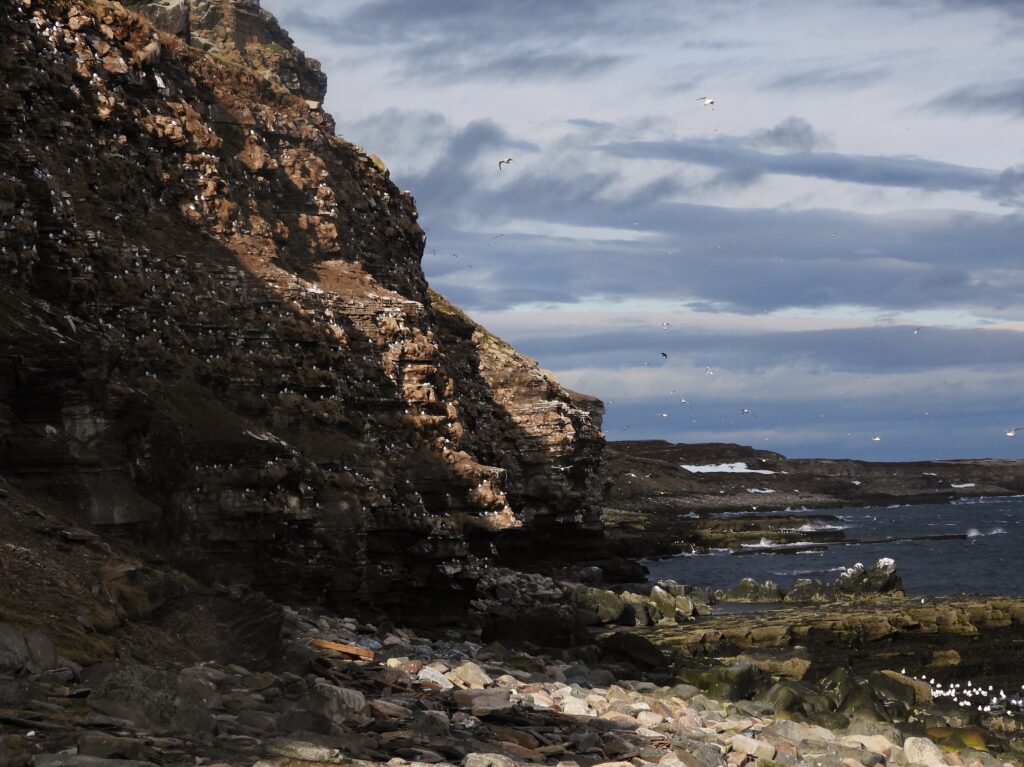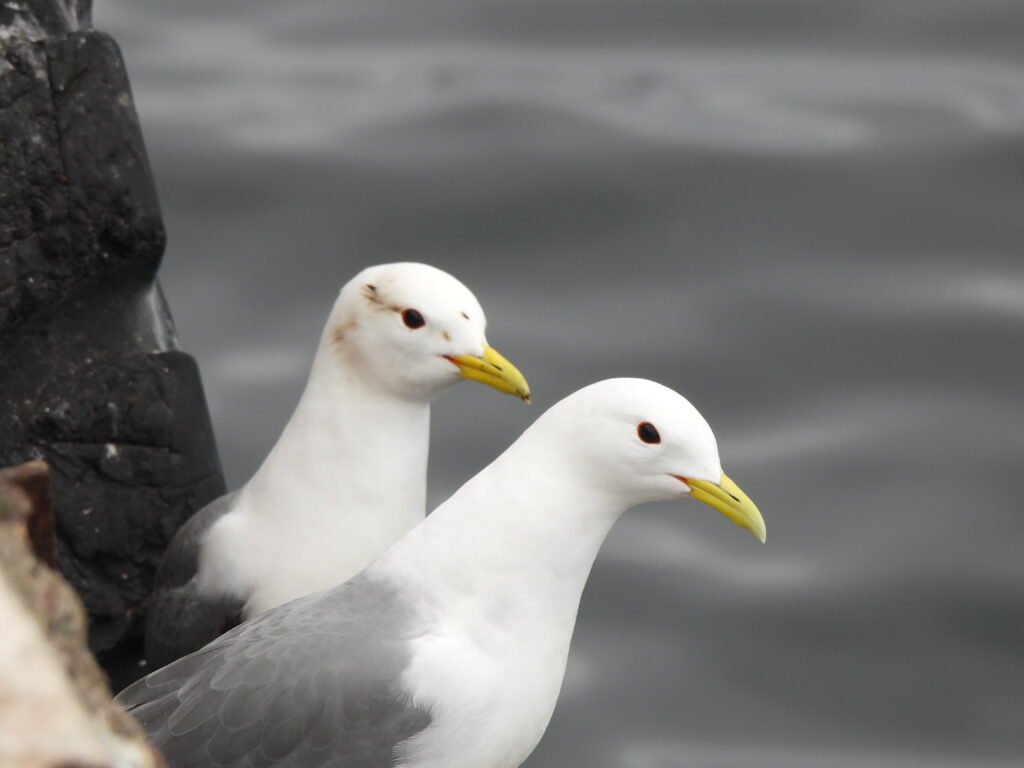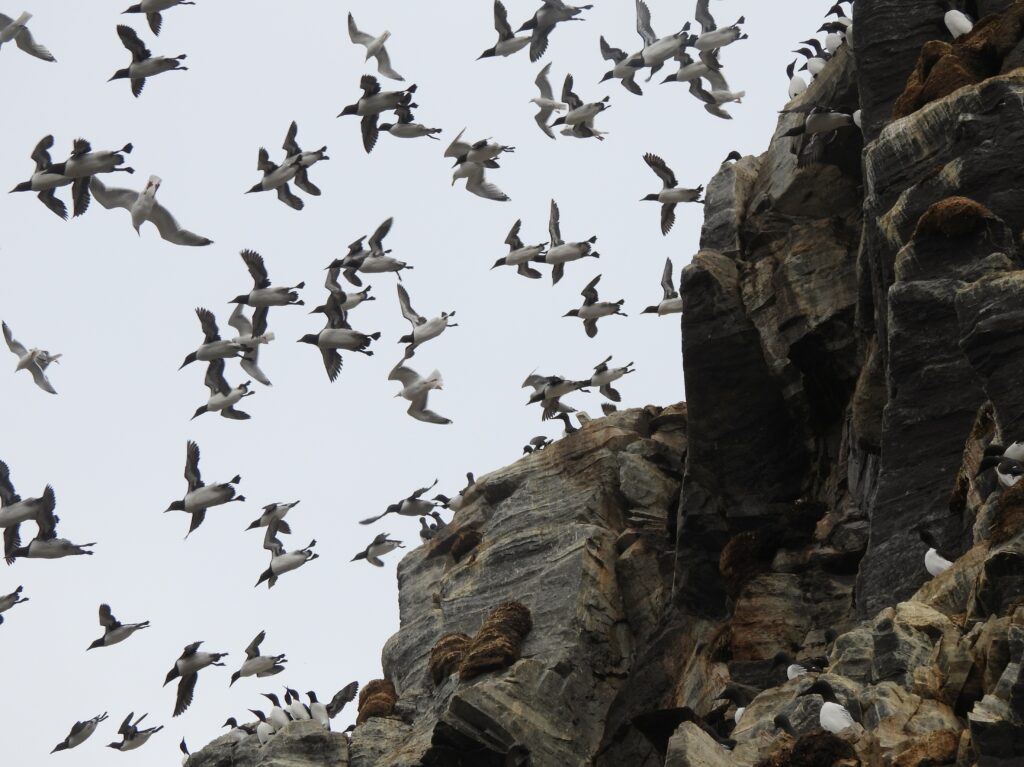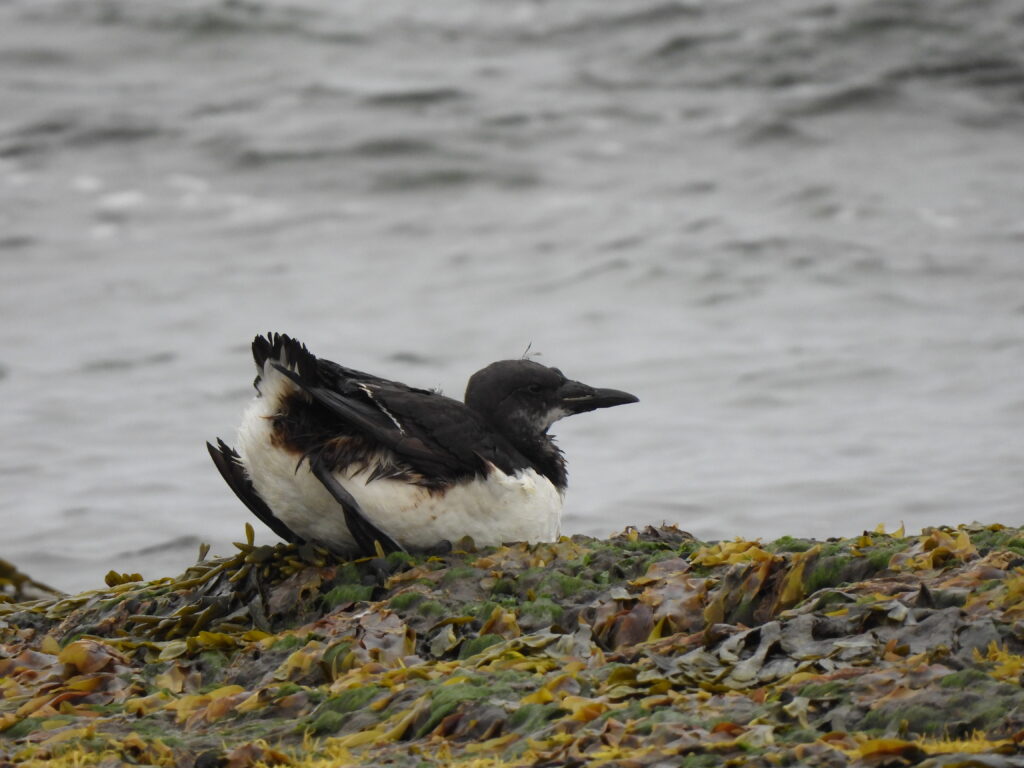I am spending this week in Finnish and Norwegian lapland with Andrea Cerdà, Guillem de los Santos, Darío Gijón, and Pep Cantó, exploring the wonders beyond the Arctic circle from our Mediterranean point of view. As we visit seabird colonies — for some of my friends, for the first time in their lives — we notice stained birds, and find some corpses close to the shore.

We first visited Flåget, the cliff where a seabird colony sits in the Ekkerøya peninsula in the evening on Wednesday 15th May. I visited the area last year and only spotted the conspicuous black-legged kittiwakes (Rissa tridactyla), European shags (Gulosus aristotelis), and black guillemots (Cepphus grylle) that breed here. However, this time we spotted several other alcids, including at least one common murre (Uria aalge) in the waters around the colony. We indeed detected some stains, finding a dead razorbill (Alca torda) and other unidentified birds most likely eaten by a raptor — we could not determine whether the birds could have already been weak due to oil stains. Right before leaving, we noticed an Atlantic puffin (Fratercula arctica) stranded and with bad aspect in the rock islets off Flåget, most likely affected by the oil.

We spent most of Thursday 16th in and around Vardø, where some of the adult black-legged kittiwakes of the urban colony showed oil stains. We also found this in the colony of Hornøya when we visited the island later in the afternoon. As we arrived, a number of dark-stained corpses could be seen close to the shore. Some common murres showed important stains in their otherwise immaculate white belly. Some birds very close to the shore were apparently having a hard time to navigate the cliffs and getting in and out of the water. We even saw common murres falling into the rocks as they failed to fly properly when the white-tailed eagles (Haliaeetus albicilla) approached the colony and cause stampedes. We did not notice any other species importantly affected in Hornøya, where also Atlantic puffins, razorbills, thick-billed murres (Uria lomvia) and Atlantic shags breed.

We visit the Ekkerøya colony again early in the morning on Thursday 17th, to photograph purple sandpipers (Calidris maritima), long-tailed jaegers (Stercorarius longicaudus) and especially parasitic jaegers (Stercorarius parasiticus) as they chase and kleptoparasitize black-legged kittiwakes. On this second visit, I get the impression that the oil spill hazard has become more evident. More kittiwakes seem stained, I can spot a distant corpse of an undetermined alcid down the shore, and we find a thick-billed murre very close to us in the shore, struggling to stand up and clean its plumage.

For us, coming from Spain, this situation is somewhat familiar. The ecological disaster after the oil spilling event of the Prestige in waters off Galicia resonates in our minds. In 2002, this leakage — as well as a series of events related to its management by the authorities and other boats — caused the death of tens of thousands of seabirds, including gannets, murres, razorbills, and shags. This event contributed to the extinction of all the Spanish colonies of common murres and black-legged kittiwakes. We can only hope for better decisions and actions to prevent these descructive effects in the coasts of Varanger, a bulwark of European seabird species.




